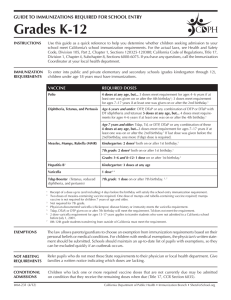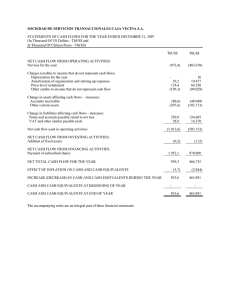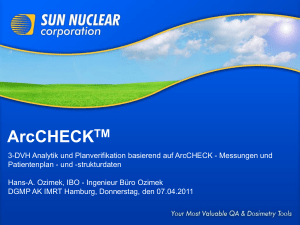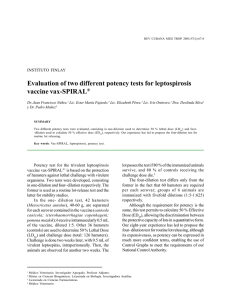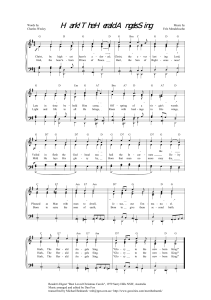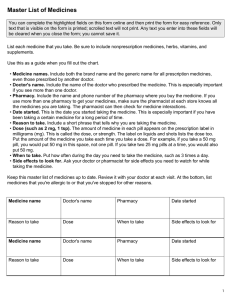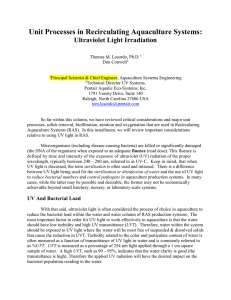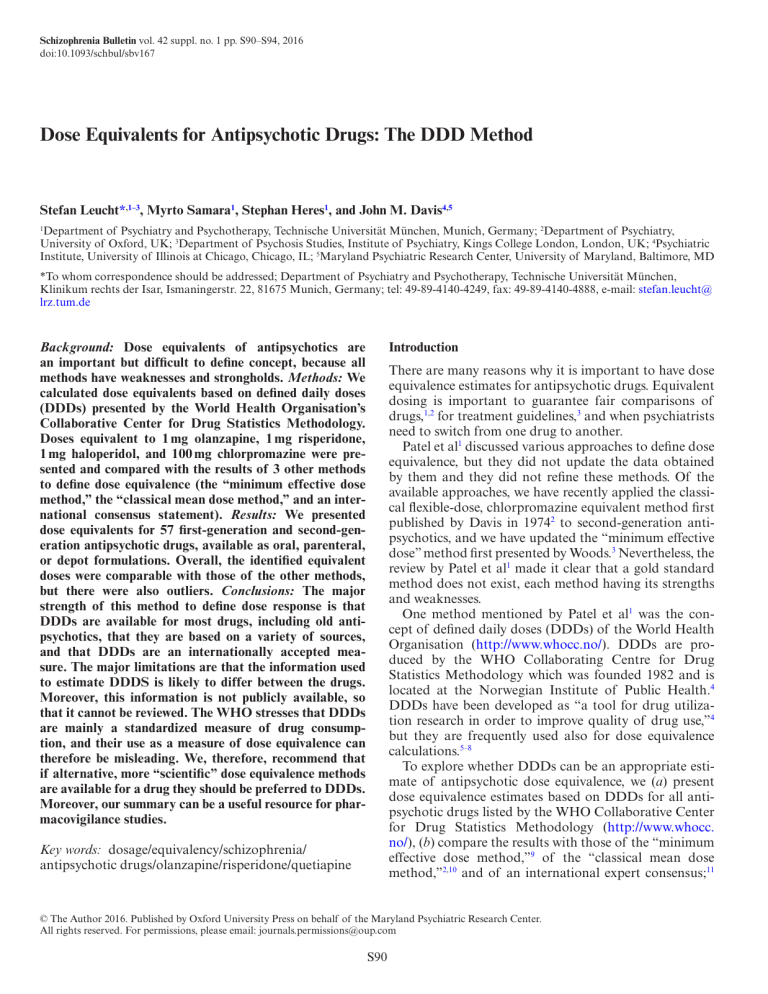
Schizophrenia Bulletin vol. 42 suppl. no. 1 pp. S90–S94, 2016 doi:10.1093/schbul/sbv167 Dose Equivalents for Antipsychotic Drugs: The DDD Method Stefan Leucht*,1–3, Myrto Samara1, Stephan Heres1, and John M. Davis4,5 Department of Psychiatry and Psychotherapy, Technische Universität München, Munich, Germany; 2Department of Psychiatry, University of Oxford, UK; 3Department of Psychosis Studies, Institute of Psychiatry, Kings College London, London, UK; 4Psychiatric Institute, University of Illinois at Chicago, Chicago, IL; 5Maryland Psychiatric Research Center, University of Maryland, Baltimore, MD 1 *To whom correspondence should be addressed; Department of Psychiatry and Psychotherapy, Technische Universität München, Klinikum rechts der Isar, Ismaningerstr. 22, 81675 Munich, Germany; tel: 49-89-4140-4249, fax: 49-89-4140-4888, e-mail: stefan.leucht@ lrz.tum.de Background: Dose equivalents of antipsychotics are an important but difficult to define concept, because all methods have weaknesses and strongholds. Methods: We calculated dose equivalents based on defined daily doses (DDDs) presented by the World Health Organisation’s Collaborative Center for Drug Statistics Methodology. Doses equivalent to 1 mg olanzapine, 1 mg risperidone, 1 mg haloperidol, and 100 mg chlorpromazine were presented and compared with the results of 3 other methods to define dose equivalence (the “minimum effective dose method,” the “classical mean dose method,” and an international consensus statement). Results: We presented dose equivalents for 57 first-generation and second-generation antipsychotic drugs, available as oral, parenteral, or depot formulations. Overall, the identified equivalent doses were comparable with those of the other methods, but there were also outliers. Conclusions: The major strength of this method to define dose response is that DDDs are available for most drugs, including old antipsychotics, that they are based on a variety of sources, and that DDDs are an internationally accepted measure. The major limitations are that the information used to estimate DDDS is likely to differ between the drugs. Moreover, this information is not publicly available, so that it cannot be reviewed. The WHO stresses that DDDs are mainly a standardized measure of drug consumption, and their use as a measure of dose equivalence can therefore be misleading. We, therefore, recommend that if alternative, more “scientific” dose equivalence methods are available for a drug they should be preferred to DDDs. Moreover, our summary can be a useful resource for pharmacovigilance studies. Introduction There are many reasons why it is important to have dose equivalence estimates for antipsychotic drugs. Equivalent dosing is important to guarantee fair comparisons of drugs,1,2 for treatment guidelines,3 and when psychiatrists need to switch from one drug to another. Patel et al1 discussed various approaches to define dose equivalence, but they did not update the data obtained by them and they did not refine these methods. Of the available approaches, we have recently applied the classical flexible-dose, chlorpromazine equivalent method first published by Davis in 19742 to second-generation antipsychotics, and we have updated the “minimum effective dose” method first presented by Woods.3 Nevertheless, the review by Patel et al1 made it clear that a gold standard method does not exist, each method having its strengths and weaknesses. One method mentioned by Patel et al1 was the concept of defined daily doses (DDDs) of the World Health Organisation (http://www.whocc.no/). DDDs are produced by the WHO Collaborating Centre for Drug Statistics Methodology which was founded 1982 and is located at the Norwegian Institute of Public Health.4 DDDs have been developed as “a tool for drug utilization research in order to improve quality of drug use,”4 but they are frequently used also for dose equivalence calculations.5–8 To explore whether DDDs can be an appropriate estimate of antipsychotic dose equivalence, we (a) present dose equivalence estimates based on DDDs for all antipsychotic drugs listed by the WHO Collaborative Center for Drug Statistics Methodology (http://www.whocc. no/), (b) compare the results with those of the “minimum effective dose method,”9 of the “classical mean dose method,”2,10 and of an international expert consensus;11 Key words: dosage/equivalency/schizophrenia/ antipsychotic drugs/olanzapine/risperidone/quetiapine © The Author 2016. Published by Oxford University Press on behalf of the Maryland Psychiatric Research Center. All rights reserved. For permissions, please email: journals.permissions@oup.com S90 Dose Equivalents for Second-Generation Antipsychotics and (c) we discuss the strengths and weaknesses of the DDD approach. and 100 mg chlorpromazine were obtained applying the same principle. Methods Results “The defined daily dose DDD is the assumed average maintenance dose per day for a drug used for its main indication in adults.”4 DDDs are produced by the WHO Collaborative Center for Drug Statistics Methodology for all drugs listed in the Anatomical Therapeutic Chemical (ATC) classification system (http://www. whocc.no/).4 The following principles are important: the reference point for DDDs is a 70-kg adult, and they are based on the main indication of a drug, which in the case of antipsychotics is “psychosis.” When a user (eg, a health authority or researcher, but usually the manufacturer) applies for a DDD of a new drug, the following information must be submitted: dose ranges and dosing instructions in the product information approved by 1 or more major regulatory authorities, doses used in clinical trials, market research data on doses used in practice in a range of countries, comparative dosing information (if available), and a proposal for a DDD justified by the submitted data.4 This information is reviewed in a formalized process including the possibility to appeal. Once a DDD has been assigned, there is always a review of the data 3 years after inclusion in the ATC Index.4 After this 3 year review, DDDs are usually not reexamined before an additional 5 years, unless the Working Group decides to reconsider all DDDs in an ATC group.4 DDDs can be different for different routes of administration of a drug, if these have a substantially different bioavailability (eg, oral and parenteral administration of antipsychotics), but depot formulations are usually assigned the same DDDs as the ordinary oral dosage form.4 As DDDs are the assumed average maintenance doses for drugs for their main indication, we extracted the DDDs of all drugs listed in the section “antipsychotic drugs” (ATC code N05A, http://www.whocc.no/atc_ ddd_index/)” of the WHO’s ATC/DDD index, and calculated doses that are equivalent to 1 mg olanzapine, 1 mg risperidone, 1 mg haloperidol, and 100 mg chlorpromazine. Haloperidol and chlorpromazine are prototypal and probably most studied first-generation antipsychotic drugs and olanzapine and risperidone are the oldest second-generation antipsychotic drugs available, thus again a lot of information is available on them. Moreover, other analyses of dose equivalence have also used these drugs as benchmarks enhancing comparability. Nevertheless, the principle to develop dose equivalence estimates could use any drug as a reference. Using olanzapine as an example, the formula to derive doses of each drug that are equivalent to 1 mg olanzapine is: DDD of the drug/10 (because the DDD of olanzapine is 10 mg, see table 1). Doses equivalent to 1 mg risperidone, 1 mg haloperidol, Table 1 presents the DDDs and the doses equivalent to 1 mg olanzapine for all 57 drugs listed currently in the Anatomical Therapeutic Chemical (ATC) classification system (http://www.whocc.no/). Fifty-five DDDs were available for oral formulations, 30 for parenteral medications, and 11 for long-acting injectable (depot) antipsychotics. The DDDs of depot drugs are based on the average recommended doses divided by the dosing interval.4 We also present the results based on the following other methods to define dose equivalence for comparison: the “minimum effective dose method,”9 the “classical mean dose method” (based on the original work by Davis in 19742 for first-generation antipsychotics and on Leucht et al10 for second-generation antipsychotics), and the international expert consensus published by Gardner et al11 In Webappendix 1, we present haloperidol, risperidone, and chlorpromazine equivalents (supplementary material). Discussion DDDs are frequently used in research about antipsychotic drugs.5,6,12–14 The main strengths of this method to define dose equivalence is that DDDs are available for most antipsychotic drugs, while all other approaches can only present a selection. Moreover, they are an internationally accepted measure, and they are based on a variety of sources, while other methods are usually based on limited information such as minimum effective doses based 1 or 2 low dose arms of clinical trials or the mean doses of phase III/IV trials.9 Finally, a comparison with olanzapine equivalents derived from other methods shows that many estimates were comparable,2,9–11 although there were also outliers (see table 1). While many researchers have used DDDs for the purpose of dose equivalence in the past (see eg,5–8), very few studies have examined their reliability by comparing them with other methods. Nosé et al12 found a strong correlation of DDDs of 227 individual patients with chlorpromazine (CPZ) equivalencies based on the reports by Davis,15 by Rey et al16 and by Woods,3 and with equivalence doses expressed as a percentage of the maximum doses of each drug according to the British National Formulary (BNF).17 It was not reported which drugs the patients received, thus it is not clear for which antipsychotics the comparison was valid. Similarly, Sweileh et al14 found strong correlations between DDDs of 10 antipsychotics, chlorpromazine equivalents, and equivalents based on BNF maxima in 250 patients with schizophrenia. In contrast, Rijcken et al13 found considerable discrepancy between DDDs and chlorpromazine equivalents for each drug. However, unlike Nosé et al12 and Sweileh et al14 S91 S. Leucht et al Table 1. Olanzapine Equivalents Based on DDDs, the Minimum Effective Dose Method, the Classical Mean Dose Method, and an International Consensus DDD DDD OLA OLA OLA OLA OLA 1 mg Equ Oral Form. Minimum Effective Dose Method9 1 mg Equ Oral Form. Classical Mean Dose Method10 1 mg Equ Oral Form. Gardner et al.11 — — — 1.33 1.33 — — — — — — — — — 40 — — — — — — — 0.53 — — — — 5.33 — — — — — 1 1 0.4 — — — — — — — — — — 20 — 0.27 1.6 — — — — — — — — 38.33 1.41 0.89 — — — — — 38.88 — — — 30.62 — — — — — — — 0.74 — — — — — — — — — — 1 — — — — — — — — — — — — 32.27 — 0.38 1.08 — — — — — — — — 34.48 1.49 — 0.25 — — — — 30.30 25 3.03 5.00 20.00 — — 0.5 — 0.50 0.60 — 0.5 — 20.00 — 3.03 — — 14.93 5.00 — — 1.00 1.20 0.45 — — 2.50 1.49 0.40 — — 4.35 — — 37.04 10.64 0.30 1.00 40.00 — — — 25.00 — Drug Oral Drug Paren-teral/ Depot Drug 1 mg Equ Oral Form. DDD Method 1 mg eEqu Parenteral/ Depot Form. DDD Method Acepromazine Acetophenazine Amisulpride Aripiprazole Asenapine Benperidol Bromperidol Butaperazine Cariprazine Chlorproethazine Chlorpromazine Chlorprothixene Clopenthixol Clotiapine Clozapine Cyamemazine Dixyrazine Droperidol Fluanisone Flupentixol Fluphenazine Fluspirilene Haloperidol Iloperidone Levomepromazine Levosulpiride Loxapine Lurasidone Melperone Mesoridazine Molindone Moperone Mosapramine Olanzapine Oxypertine Paliperidone Penfluridol Perazine Periciazine Perphenazine Pimozide Pipamperone Pipotiazine Prochlorperazine Promazine Prothipendyl Quetiapine Remoxipride Risperidone Sertindole Sulpiride Sultopride Thiopropazate Thioproperazine Thioridazine Tiapride 100 50 400 15 20 1.5 10 10 — — 300 300 100 80 300 — 50 — — 6 10 — 8 — 300 400 100 60 300 200 50 20 — 10 120 6 6 100 50 30 4 200 10 100 300 240 400 300 5 16 800 1200 60 75 300 400 50 — — 15 — — 10/3.3 — — — 100 50 100 80 300 — 30 2.5 — n.i./4 n.i./1 n.i./0.7 8/3.3 — 100 — — — 300 200 — 20 — 10/10.0 — n.i./2.5 — 100 20 10/7.0 — — n.i./5 50 100 240 — 300 n.i./2.7 — 800 — — 20 — 400 10 5 40 1.5 2 0.15 1 1 — — 30 30 10 8 30 — 5 — — 0.6 1 — 0.8 — 30 40 10 6 30 20 5 2 — 1 12 0.6 0.6 10 5 3 0.4 20 1 10 30 24 40 30 0.5 1.6 80 120 6 7.5 30 40 5 — — 1.5 — — 1/0.33 — — — 10 5 10 8 30 — 3 0.25 — n.i./0.4 n.i./0.1 n.i./0.07 0.8/0.33 — 10 — — — 30 20 — 2 — 1/1.0 — n.i./0.25 — 10 2 1/0.7 — — n.i./0.5 5 10 24 — 30 n.i./0.27 — 80 — — 2 — 40 S92 Dose Equivalents for Second-Generation Antipsychotics Table 1. Continued DDD DDD OLA OLA OLA OLA OLA 1 mg Equ Oral Form. Minimum Effective Dose Method9 1 mg Equ Oral Form. Classical Mean Dose Method10 1 mg Equ Oral Form. Gardner et al.11 — — — — — 5.33 — — — — — — — 7.92 13.24 — 1.49 1.00 0.10 5.00 — 8.00 14.93 2.50 Drug Oral Drug Paren-teral/ Depot Drug 1 mg Equ Oral Form. DDD Method 1 mg eEqu Parenteral/ Depot Form. DDD Method Tiotixene Trifluoperazine Trifluperidol Triflupromazine Veralipride Ziprasidone Zotepine Zuclopenthixol 30 20 2 100 — 80 200 30 — 8 — 100 — 40 — 30/15 3 2 0.2 10 — 8 20 3 — 0.8 — 10 — 4 — 3/1.5 Note: DDD, defined daily dose; equ, equivalent; form, formulation. The first 2 columns present the DDDs for oral and parenteral/depot drugs according to the WHO (http://www.whocc.no/). The following 2 columns show the doses that are equivalent to 1 mg oral olanzapine according to the DDD method, and the last 3 columns show doses equivalent to 1 mg oral olanzapine according to the minimum effective dose method,9 the mean dose method,10 and an international consensus.11 they used the average CPZ equivalents indicated by all reports found by a literature search rather than focussing on the most systematically derived estimates and comparing them with DDDs in actual patients. Averaging CPZs from the literature is a less scientific approach which is more prone to bias, because Rey et al16 reported that many chlorpromazine equivalents reported in guidelines, textbooks, and scientific articles were not based on evidence, but rather on the clinical experience of the authors, leading to up to 500% variance of the estimates for individual drugs.18 This being said, none of the 3 reports used appropriate statistical methods, because correlations demonstrate only associations.19 Future studies for comparisons of DDDs and other measures should use approaches such as Bland and Altman plots that help to find out whether methods lead to interchangeable results.20 Moreover, the following major problems limit the use of DDDs for dose equivalence. The most important limitation is that DDDs have not been developed for the purpose of dose equivalence. The ATC/DDD system has been developed as a tool for drug utilization research.4 DDDs are, for example, frequently used to monitor drug consumption, nationally or internationally, over the years. For this reason, the aim of the WHO is to have a stable measure so that once DDDs have passed the revision at 3 years, there is a reluctance to change them, because alterations would be disadvantageous for long term studies on drug consumption.4 Reasons for adapting DDDs can be a change of the main indication, or data from several countries showing that a change of at least 50% is necessary.4 However, antipsychotic dosing has changed over the years. For example, there was a high-dose phase in the 1970s and 80s until reviews revealed that high doses are not more efficacious.21,22 Therefore, drugs developed in the 1970s might have relatively higher DDDs than antipsychotics developed later. The WHO working group cautions that “DDDs do not necessarily reflect therapeutically equivalent doses of different drugs and therefore cannot be assumed to represent daily doses that produce similar treatment outcomes for all products within an ATC category.”4 For example, promazine was used in a maintenance doses of 300 mg when it was first introduced. The DDD of chlorpromazine was also 300 mg. But at that dose promazine was half as efficacious as chlorpromazine, and it caused substantially more seizures.23,24 For a reflection of dose utilized, it is accurate, but its efficacy and side effect are different. This is an extreme example and a nowadays rarely used drug, but it illustrates the problem. Another limitation is that the exact sources on which the individual DDDs are based are not publicly available. It is therefore impossible for researchers to check upon the validity of the individual DDDs. But it can be assumed that the sources have varied enormously given that the drugs included in the ACT classification have been developed over several decades. In summary, the main advantages of DDDs are that they are available for almost all antipsychotic drugs, and that they are internationally accepted measures based on reviews of various sources. The major disadvantages are that they have never been developed as measures of dose equivalence, and that there is a reluctance to change them once they have been established. These limitations hold for both research and clinical practice and guidelines. Consequently, we feel that DDDs should only be used as a measure for dose equivalence if data based on other more scientific approaches are not available. For these situations we present an excel sheet on our home­ page (http://www.cfdm.de/indexab2e.html?option=com_ content&task=view&id=15&Itemid=29) that clinicians and researchers can easily use to calculate equivalence S93 S. Leucht et al estimates from a variety of methods. And our summary of DDDs can obviously be a useful resource for pharmacovigilance studies. 8. Supplementary Material Supplementary material is available at http://schizophreniabulletin.oxfordjournals.org. Acknowledgement In the last 3 years, Stefan Leucht has received honoraria for lectures from EliLilly, Lundbeck (Institute), Pfizer, Janssen, BMS, Johnson and Johnson, Otsuka, Roche, SanofiAventis, ICON, Abbvie, AOP Orphan, Servier; for consulting/advisory boards from Roche, Janssen, Lundbeck, EliLilly, Otsuka, TEVA; for the preparation of educational material and publications from Lundbeck Institute and Roche. EliLilly has provided medication for a clinical trial led by SL as principal investigator. Stephan Heres has received honoraria from Janssen-Cilag, Eli Lilly, Sanofi-Aventis, Lundbeck and Johnson & Johnson, he has accepted travel or hospitality payment from Janssen-Cilag, Sanofi-Aventis, Johnson & Johnson, Pfizer, Bristol-MyersSquibb, AstraZeneca, Lundbeck, Novartis and Eli Lilly, he has participated in clinical trials sponsored or supported by Eli Lilly, Janssen Cilag, Johnson & Johnson, BristolMyers-Squibb, AstraZeneca, Otsuka, Lundbeck, Novartis, Servier, Pierre Fabre, Pfizer, Organon, Roche and Merck, and he has participated in advisory activities and boards for Janssen, Johnson & Johnson, Eli Lilly, Lundbeck, Otsuka and Roche. Myrto Samara and John M Davis have no conflict of interest to declare. 9. 10. 11. 12. 13. 14. 15. 16. 17. 18. References 1. Patel MX, Arista IA, Taylor M, Barnes TR. How to compare doses of different antipsychotics: a systematic review of methods. Schizophr Res. 2013;149:141–148. 2. Davis JM. Dose equivalence of the antipsychotic drugs. J Psychiatr Res. 1974;11:65–69. 3. Woods SW. Chlorpromazine equivalent doses for the newer atypical antipsychotics. J Clin Psychiatry. 2003;64:663–667. 4. Methodology WCCfDS. Guidelines for ATC Classification and DDD Assignment 2014. Oslo: World Health Organisation; 2013.[AU:Please provide country name for publisher location for references 4, ] 5. Uchida H, Suzuki T, Takeuchi H, Arenovich T, Mamo DC. Low dose vs standard dose of antipsychotics for relapse prevention in schizophrenia: meta-analysis [published online ahead of print November 27, 2009]. SchizophrBull. doi: 10.1093/schbul/sbp149 6. Torniainen M, Mittendorfer-Rutz E, Tanskanen A, et al. Antipsychotic treatment and mortality in schizophrenia. Schizophr Bull. 2015;41:656–663. 7. Xiang YT, Weng YZ, Leung CM, Tang WK, Ungvari GS. Clinical and social correlates with the use of depot S94 19. 20. 21. 22. 23. 24. antipsychotic drugs in outpatients with schizophrenia in China. Int J Clin Pharmacol Ther. 2008;46:245–251. Yorston G, Pinney A. Chlorpromazine equivalents and percentage of British National Formulary maximum recommended dose in patients receiving high-dose antipsychotics. Psychiatric Bulletin. 2000;24:130–132. Leucht S, Samara M, Heres S, Patel MX, Woods SW, Davis JM. Dose equivalents for second-generation antipsychotics: the minimum effective dose method. Schizophr Bull. 2014;40:314–326. Leucht S, Samara M, Heres S, et al. Dose equivalents for second-generation antipsychotic drugs: the classical mean dose method. Schizophr Bull. 2015;41:1397–1402. Gardner DM, Murphy AL, O’Donnell H, Centorrino F, Baldessarini RJ. International consensus study of antipsychotic dosing. Am J Psychiatry. 2010;167:686–693. Nosè M, Tansella M, Thornicroft G, et al. Is the defined daily dose system a reliable tool for standardizing antipsychotic dosages? Int Clin Psychopharmacol. 2008;23:287–290. Rijcken CA, Monster TB, Brouwers JR, de Jong-van den Berg LT. Chlorpromazine equivalents versus defined daily doses: how to compare antipsychotic drug doses? J Clin Psychopharmacol. 2003;23:657–659. Sweileh WM, Odeh JB, Shraim NY, Zyoud SH, Sawalha AF, Al-Jabi SW. Evaluation of defined daily dose, percentage of British National Formulary maximum and chlorpromazine equivalents in antipsychotic drug utilization. Saudi Pharm J. 2014;22:127–132. Davis JM. Comparative doses and costs of antipsychotic medication. Arch Gen Psychiatry. 1976;33:858–861. Rey MJ, Schulz P, Costa C, Dick P, Tissot R. Guidelines for the dosage of neuroleptics. I: Chlorpromazine equivalents of orally administered neuroleptics. Int Clin Psychopharmacol. 1989;4:95–104. Committee JF. British National Formulary. 64 ed. London: Royal Pharmaceutical Society and BMJ Publishing Group Ltd; 2012. Dewan MJ, Koss M. The clinical impact of reported variance in potency of antipsychotic agents. Acta Psychiatr Scand. 1995;91:229–232. Bland JM, Altman DG. A note on the use of the intraclass correlation coefficient in the evaluation of agreement between two methods of measurement. Comput Biol Med. 1990;20:337–340. Bland JM, Altman DG. Statistical methods for assessing agreement between two methods of clinical measurement. Lancet. 1986;1:307–310. Davis JM, Barter JT, Kane JM. Antipsychotic drugs. In: Kaplan HJ, Saddock BJ, eds. Comprehensive Textbook of Psychiatry. 5th ed. Baltimore: Williams and Wilkins; 1989:1591–1626. Baldessarini RJ, Cohen BM, Teicher MH. Significance of neuroleptic dose and plasma level in the pharmacological treatment of psychoses. Arch Gen Psychiatry. 1988;45:79–91. Casey JF, Bennett IF, Lindley CJ, Hollister LE, Gordon MH, Springer NN. Drug therapy in schizophrenia. A controlled study of the relative effectiveness of chlorpromazine, promazine, phenobarbital, and placebo. AMA Arch Gen Psychiatry. 1960;2:210–220. Klein DF, Davis JM. Diagnosis and Drug Treatment of Psychiatric Disorders. Baltimore: Williams and Wilkins; 1969.

